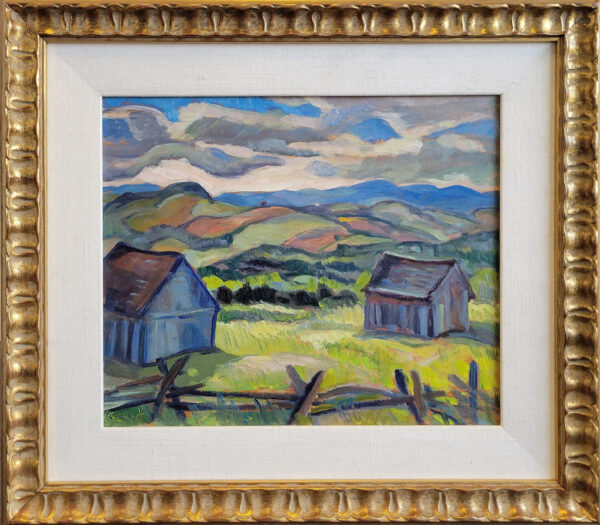Beaver Hall Group
In an era when women artists were often excluded from professional art, the Beaver Hall Group was the first Canadian artist association comprised primarily, though not exclusively, of professional female artists. When the Group of Seven formally disbanded in 1932, the women of the Beaver Hall Group helped establish the Canadian Group of Painters in 1933, to provide exhibition opportunities to their members. Members and associates included Canadian art icons such as A.Y. Jackson (the Group’s first president), Mabel May, Lilias Torrance Newton, Randolph Hewton, Edwin Holgate, Mabel Lockerby, Anne Savage, Emily Coonan, Adrien Hébert, Henri Hébert, and Prudence Heward.
Beaver Hall Group: Where Did They Met?
The painters met in the late 1910’s while studying at the Art Association of Montreal. Sharing a studio space at 305 Beaver Hall Hill in Montreal, members are now collected in the National Gallery, the Montreal Museum of Fine Arts, the Art Gallery of Ontario and private collections.
At the time, social convention restricted women to painting as a pastime – not a career. Yet their director at the Art Association of Montreal, William Brymner, who served in this position for thirty-five years, encouraged them by facilitating scholarships for exceptional students.
A.Y. Jackson & the Beaver Hall Group

Situated in the heart of Montreal’s artist community, the association was connected to Toronto by their President, A.Y. Jackson, who supported and stimulated the group. Jackson would arrange exhibitions between the Group of Seven and the Beaver Hall Group, identifying their goals as in line with each other.
Speaking to the spirit of Beaver Hall’s goals at their first exhibition in 1921, Jackson underlined the artists’ core idea as freedom from rules or requirements. The artist paints “with utter disregard for what has hitherto been considered requisite to the acceptance of the work at the recognized art exhibitions in Canadian centres. ‘Schools’ and ‘isms’ do not trouble us,” Jackson emphasized, “individual expression is our chief concern”. The Beaver Hall Group’s official duration is debated, while seeming to exist from 1920 to 1922. When the women of Beaver Hall helped formed the Canadian Group of Painters, they elected Prudence Heward, a leading figurative painter known for defiant female subjects, as co-founder and vice president (1933–39).

Métis, Qc, c. 1938
Anne Savage (1896-1971)
1938, Oil on panel
12 x 14 inches – Sold
'Schools' and 'isms' do not trouble us. Individual expression is our chief concern.
- A.Y. Jackson, President of the Beaver Hall Group
Beaver Hall Group: Their Influences and Unifying Themes
In the beginning of the twentieth century, Canadian artists often returned from studies in Paris, bringing with them European influences, specifically the techniques of the Post-Impressionists (1886-1905). Reacting against the Impressionsts, and their concern for the naturalistic depistion of light and colour, the Post-Impressionists devalued naturalism. It was the 1913 Armory Show in New York that turned the tides towards Modernism in North America. The exhibition brought Impressionism, Post-Impressionism, Cubism, and Futurism to the continent.
With the First World War stirring Nationalism, bringing up the unending question of Canadian identity, artists often responsed with paintings of the Canadian Sheild, pine trees, and expensively empty landscapes. The women of the Beaver Hall Group took a different approach. While not concerned much with Nationalism, their works included signs of habitation in the landscape. Homes, tools, boats, roads, churches – the picture contained proof of people. Often depicting rural scenes with Post-Impressionist colour, the Beaver Hall Group was praised for their originality.
Ref: Walters, Evelyn. The Women of Beaver Hall: Canadian Modernist Painters. United Kingdom, Dundurn, 2005.
Members of The Beaver Hall Group
- Nora Collyer
- Emily Coonan
- Prudence Heward
- Mabel Lockerby
- Henrietta Mabel May
- Kathleen Morris
- Lilias Torrance Newton
- Sarah Robertson
- Anne Savage
- Ethel Seath
- Adrien Hebert
- Randolph Hewton
- Edwin Holgate
- A.Y. Jackson, the Group’s first president
- Pegi Nicol MacLeod
- Robert Pilot
- Sybil Robertson
- Jori Smith



You must be logged in to post a comment.